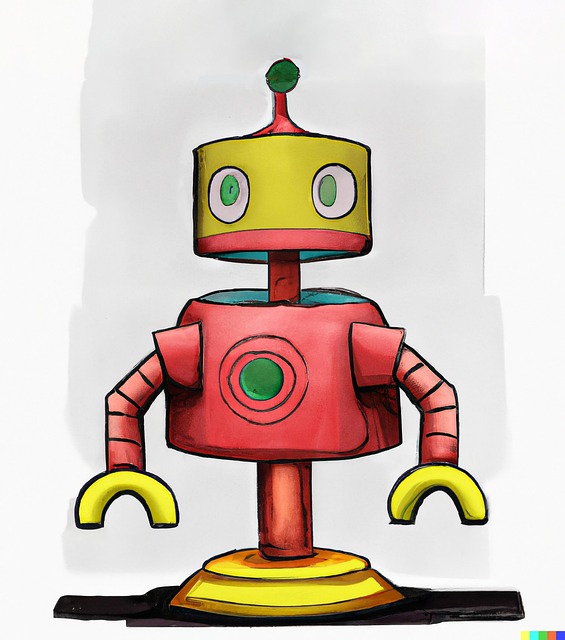# The Rise of AI Technology: Transforming Industries and Shaping the Future of Human Interaction
Artificial Intelligence (AI) has rapidly evolved over the past few decades, transitioning from a niche scientific pursuit to a mainstream force that is reshaping industries and redefining human interaction. As this technology continues to advance, its implications are profound, affecting everything from healthcare to finance, and even our daily lives. This article explores the transformative power of AI, its impact on various sectors, and the future of human interaction in an increasingly automated world.
## The Impact of AI on Various Industries
In the realm of healthcare, AI has emerged as a game-changer. By leveraging machine learning algorithms, healthcare providers can analyze vast amounts of data to improve patient outcomes. For instance, AI-driven diagnostic tools can identify diseases at earlier stages than traditional methods, leading to timely interventions. The integration of AI in medical imaging has allowed for more accurate interpretations of X-rays, MRIs, and CT scans, significantly reducing the margin for human error.
Moreover, the finance sector is experiencing a seismic shift due to AI technology. Automated trading systems, powered by sophisticated algorithms, can process market data at lightning speed, making investment decisions in real-time. Additionally, AI is enhancing fraud detection capabilities, allowing financial institutions to identify suspicious activities more effectively. The ability to analyze patterns and predict market trends positions AI as an indispensable tool for financial analysts and investors alike.
In the realm of manufacturing, AI is streamlining operations and increasing efficiency. Smart factories equipped with AI systems can monitor production lines in real time, identifying bottlenecks and optimizing workflows. Predictive maintenance powered by AI algorithms can forecast equipment failures before they occur, minimizing downtime and reducing costs. As a result, manufacturers are not only boosting productivity but also enhancing product quality, leading to greater customer satisfaction.
## AI and the Evolution of Human Interaction
The advent of AI technology is also reshaping the way humans interact with machines and each other. Chatbots and virtual assistants have become commonplace, providing users with instant access to information and services. These AI-driven interfaces are designed to understand natural language, allowing for more intuitive communication. Consequently, businesses are utilizing chatbots to enhance customer service, enabling 24/7 support and freeing human agents to handle more complex inquiries.
Furthermore, social media platforms are increasingly employing AI algorithms to curate content and personalize user experiences. By analyzing user behavior and preferences, these algorithms can deliver tailored recommendations, enhancing user engagement. However, this shift raises ethical questions about privacy and the potential for echo chambers, where individuals are exposed only to viewpoints that reinforce their existing beliefs. As AI continues to influence social interactions, the challenge lies in balancing personalization with the need for diverse perspectives.
In education, AI is transforming the learning experience. Adaptive learning platforms utilize AI to assess individual student performance and tailor educational content accordingly. This personalized approach not only fosters better understanding but also keeps students engaged. Teachers are also benefiting from AI tools that streamline administrative tasks, allowing them to focus more on instruction and mentorship. The result is a more dynamic educational environment that caters to diverse learning styles.
## The Future of AI: Opportunities and Challenges
Looking ahead, the future of AI technology presents both opportunities and challenges. As AI systems become more sophisticated, their potential applications are virtually limitless. Industries such as agriculture are beginning to harness AI for precision farming, utilizing data analytics to optimize crop yields and resource management. Similarly, autonomous vehicles are on the horizon, promising to revolutionize transportation and logistics.
Despite these advancements, ethical considerations surrounding AI cannot be overlooked. The potential for job displacement due to automation is a significant concern, raising questions about the future of work. As AI systems take over routine tasks, there is a pressing need for reskilling and upskilling the workforce to adapt to new roles that require human creativity and emotional intelligence. Policymakers and industry leaders must work together to develop frameworks that ensure a smooth transition into an AI-driven economy.
Moreover, the issue of bias in AI algorithms is a critical challenge that must be addressed. AI systems are only as good as the data they are trained on, and if that data reflects societal biases, the outcomes can perpetuate inequality. Ensuring fairness and transparency in AI development is essential for building trust among users and stakeholders. This calls for a collaborative approach, involving ethicists, technologists, and diverse communities in the AI design process.
In conclusion, the rise of AI technology is undeniably transforming industries and shaping the future of human interaction. From healthcare to finance and beyond, AI is enabling unprecedented efficiencies and innovations. However, as we embrace the benefits of AI, it is crucial to navigate the accompanying challenges thoughtfully. By fostering ethical practices, promoting inclusivity, and prioritizing human-centric designs, we can harness the power of AI to create a future that benefits all of humanity. The journey ahead is one of immense potential, and how we choose to engage with AI will ultimately define our collective future.











